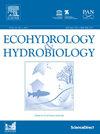Spatiotemporal mapping of groundwater recharge potential zones for physical planning process—A case of Ajmer City, India
IF 2.2
4区 环境科学与生态学
Q2 ECOLOGY
引用次数: 0
Abstract
Urban areas are growing with the growth in urban population and rapidly transforming the land use land cover (LULC), which is capable of affecting the potential of groundwater recharge at a spatial level. It is essential to recognize the complexities of urban growth along with dynamic and static natural parameters that influence the groundwater recharge in the urban region. No substantial inclusion of Groundwater Recharge Potential Zones (GWRPZ) is evident in contemporary master plans of Indian cities, resulting in a declining trend of groundwater tables with increasing dependency. The study discusses temporal changes in the urban LULC of Ajmer City in the State of Rajasthan in India and its impact on the overall Groundwater Recharge Potential Zone over a duration. Nine physical parameters, geology, lithology, geomorphology, lineament density, slope, drainage density, groundwater table, LULC and Rainfall, are used as thematic layers along with their subclasses. The Multi-criteria Decision Analysis of AHP and Weighted Overlay Analysis in GIS are applied to analyze variations at the spatial level on a temporal basis. In addition, Geostatistical techniques such as Empirical Bayesian Kriging (EBK) and Inverse Distance Weightage (IDW) are also applied to interpolate and analyze the thematic layers of the Groundwater table and Rainfall, respectively. The study delineates and analyzes the spatiotemporal variations in the GWRPZs. The confusion matrix method is also applied for validation and accuracy, which is crucial for rationalizing the water-sensitive physical planning process and instrumental in formulating suitable strategies and guidelines for preserving, managing, and retrofitting the groundwater recharge zones at the urban level in the Indian scenario.
为实际规划过程绘制地下水补给潜力区时空图--印度阿杰梅尔市的案例
随着城市人口的增长,城市地区也在不断扩大,并迅速改变着土地利用和土地覆盖(LULC),这在空间层面上影响着地下水的补给潜力。必须认识到城市发展的复杂性,以及影响城市地区地下水补给的动态和静态自然参数。在当代印度城市的总体规划中,地下水补给潜力区(GWRPZ)没有被大量纳入,导致地下水位呈下降趋势,依赖性不断增加。本研究讨论了印度拉贾斯坦邦阿杰梅尔市城市 LULC 的时间变化及其对整个地下水补给潜力区的影响。地质、岩性、地貌、线状密度、坡度、排水密度、地下水位、LULC 和降雨量这九个物理参数及其子类被用作专题图层。应用 GIS 中的 AHP 多标准决策分析和加权叠加分析来分析空间层面的时间变化。此外,还应用了经验贝叶斯克里金法(EBK)和反距离加权法(IDW)等地质统计技术,分别对地下水位和降雨量专题图层进行插值和分析。该研究划分并分析了 GWRPZ 的时空变化。研究还采用了混淆矩阵法来验证其准确性,这对合理化水敏感物理规划过程至关重要,并有助于制定适当的战略和指导方针,以保护、管理和改造印度城市一级的地下水补给区。
本文章由计算机程序翻译,如有差异,请以英文原文为准。
求助全文
约1分钟内获得全文
求助全文
来源期刊

Ecohydrology & Hydrobiology
Agricultural and Biological Sciences-Aquatic Science
CiteScore
5.40
自引率
3.80%
发文量
51
期刊介绍:
Ecohydrology & Hydrobiology is an international journal that aims to advance ecohydrology as the study of the interplay between ecological and hydrological processes from molecular to river basin scales, and to promote its implementation as an integrative management tool to harmonize societal needs with biosphere potential.
 求助内容:
求助内容: 应助结果提醒方式:
应助结果提醒方式:


